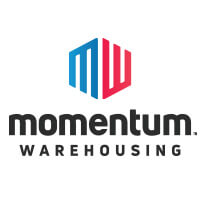Let’s explore ecommerce storage tips to optimize your product storage strategy, from small units to expansive warehouses, and enhance both efficiency and profitability.
1. Implement Inventory Management Software
- Maximizing your product storage strategy isn’t just about expanding space; it’s crucial to organize efficiently. Employing inventory management software before outgrowing your current space is vital. This tool enables eCommerce businesses to:
- Monitor stock levels to prevent shortages
- Manage purchase orders and invoices
- Generate insightful reports on sales trends
This comprehensive oversight is crucial, particularly when managing inventory across multiple locations, from spare rooms to several warehouses, ensuring a thorough understanding of your stock. If you need outside here help, just remember – at Momentum Warehousing – we offer best in class inventory management for your ecommerce storage.
2. First-In First-Out (FIFO) as an Ecommerce Storage Tip
Particularly important for perishable goods, the FIFO method ensures the oldest inventory sells first, preventing the shipment of expired or spoiled products. This involves tagging incoming items with dates, both physically and within your inventory system, prioritizing older items over newer stock. This approach minimizes waste and lost revenue by ensuring products remain fresh and sellable.
These ecommerce storage tips also applies to products who’ve undergone updates to packaging, promotions, and product design. You’ll want your old old out, to make way for the new new. What that really means, is if you are attempting to launch a campaign for a revamp of your product, or have new marketing materials built into fresh products – you’ll want the old products out first.
3. Product Storage Strategy – Open Your Own Warehouse
This ecommerce storage tip applies to the old school brick and motor sellers who have a large in-house footprint. Here’s how it works. But here’s why it works too – expanding to additional fulfillment centers in areas with high demand can reduce shipping times and costs. In turn, this enhances customer satisfaction. Analyze your shipping data to identify regions where opening new facilities could provide the most significant benefit. For instance, a business based in Portland, Oregon, might open a warehouse in Texas or the East Coast to ensure quicker delivery times across the U.S.. That will ensure consumer expectations are met and encourage repeat business.
If this task it too much to take on – no worries – we’ve already done it for you! Contact Momentum Warehousing’s team for ecommerce storage support today.
4. Leverage Third-Party Fulfillment Services
But for the smaller, mid-sized ecommerce operations – you could consider the storage tip of use third-party logistics services. These partners provide the necessary space and handle the picking, packing, and shipping of orders. While outsourcing reduces some control and incurs fees, it parallels the initial transition to larger storage solutions but without the substantial costs and complexities of managing a new facility. This option offers the benefits of expansion while mitigating financial and operational challenges. Here’s a short list of 3PL warehouses – but if you want to work owner-to-owner; feel free to connect with Momentum Warehousing directly for immediate support.
Ecommerce Storage Tips Concluded
By applying these ecommerce storage tips, eCommerce businesses can significantly improve their storage efficiency and profitability, navigating growth challenges with smarter, scalable solutions. Momentum Warehousing offers these solutions in a convient platform designed to boost your product storage strategy.
